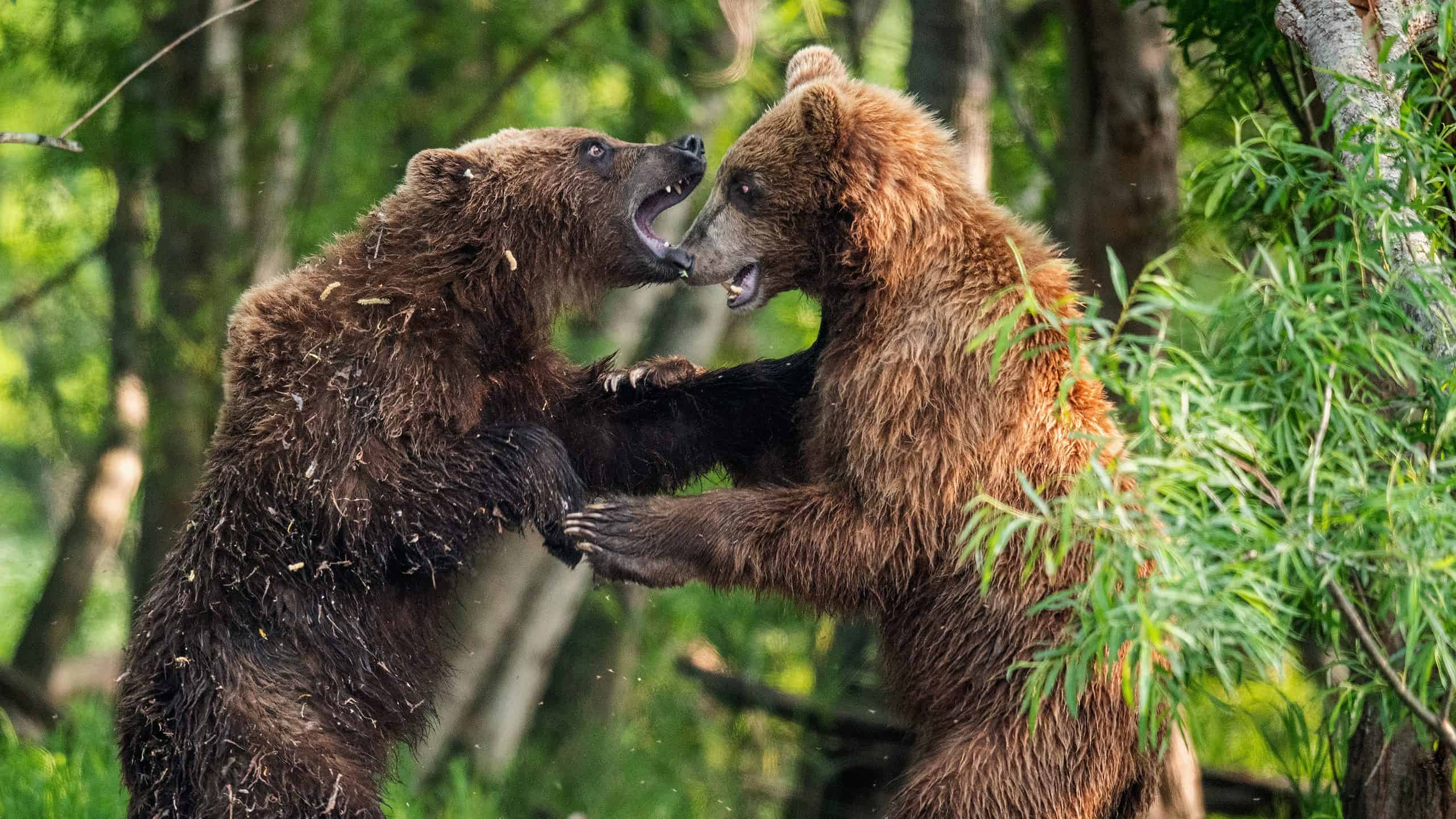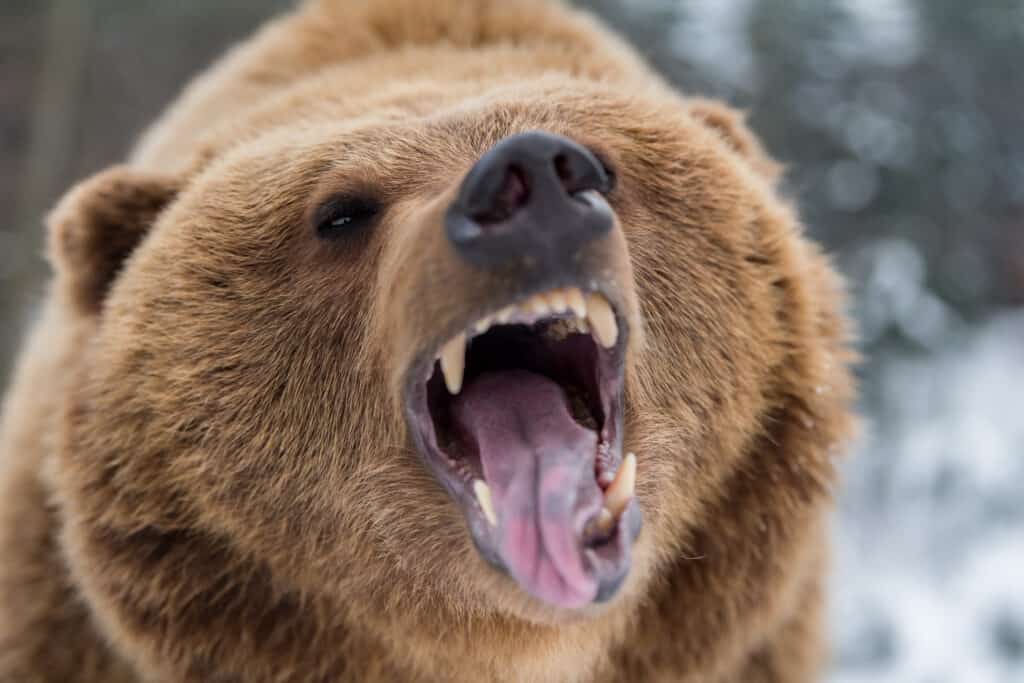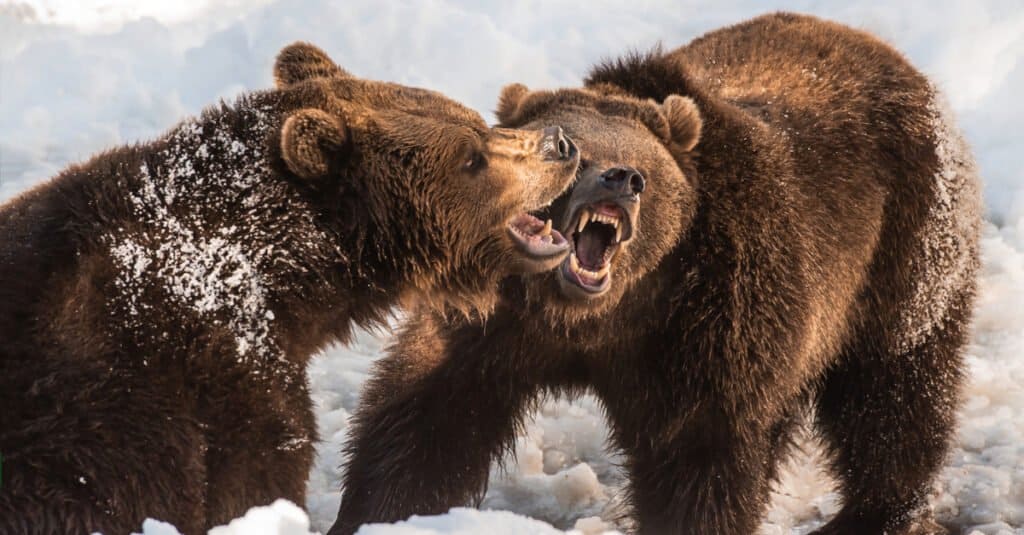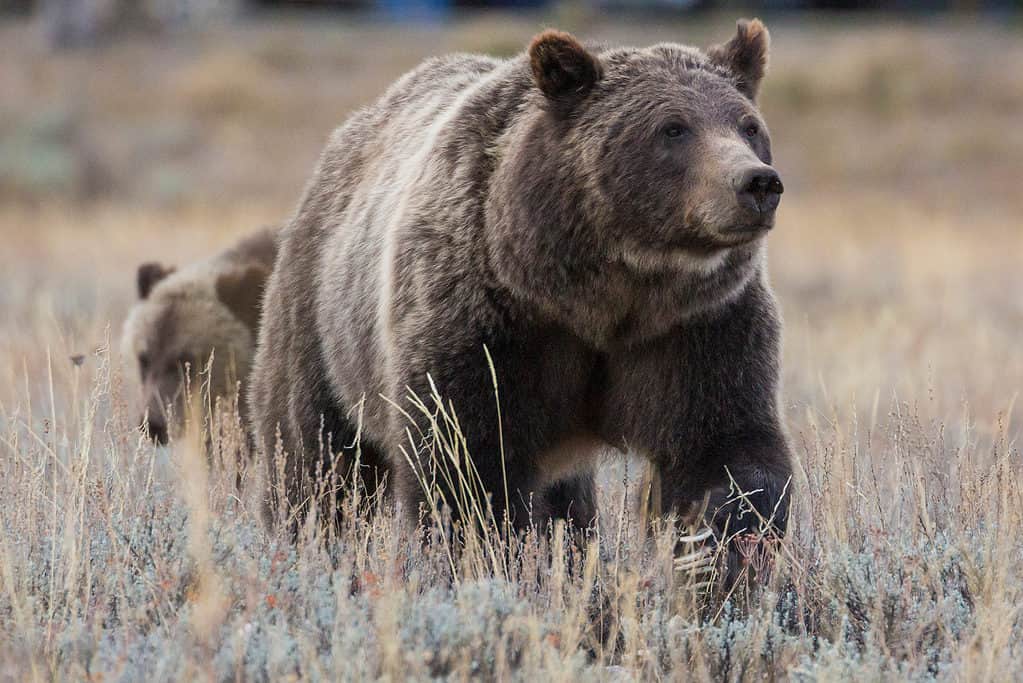Continue reading for our analysis...

Brace yourself for an exhilarating showdown between the heavyweights of the Alaskan wilderness: brown bears. The scene unfolds on a stunning Alaskan beach. Several brown bears can be seen fishing the waters, but no one seems to have any luck. That is until one bear spots an opportunity and begins joyfully running through the water.
Things heat when the humongous bear successfully lands the day’s catch: a large salmon. This sets the stage for a dramatic confrontation as another bear attempts to steal the fish. What follows is a thrilling head-to-head between two of Alaska’s largest predators.
Brown Bears of Alaska

Around 32,000 brown bears are living in Alaska.
©Volodymyr Burdiak/Shutterstock.com
Home to approximately 32,000 brown bears, Alaska is a haven for this species, also known as grizzlies.
You can find brown bears across the Alaskan landscape, from the icy Arctic region in the north to the lush Southeast rainforest. They’re found both along the coast and in the interior lands. The Kodiak bear, a unique sub-species, resides exclusively in the Kodiak Archipelago.
As opportunistic omnivores, their diet depends on what’s available in their environment, ranging from berries and plants to large salmon. They also scavenge on carcasses, hunt small mammals, and occasionally prey on young ungulates (hooved animals).
Exactly how big do these bears get? Imagine standing next to a creature that can reach heights of 7 to 10 feet and weigh over 900 pounds, and you’ll have a good idea of its massive size. Some brown bears even weigh as much as 1,400 pounds!
Are Bear Brawls Common?

Brown bears will fight when competing over food sources, which usually results in one bear retreating.
©Alexandra Giese/Shutterstock.com
There are a ton of videos of bear brawls. But that doesn’t mean fights are a daily occurrence. Bears usually avoid fights if possible, given that these confrontations require a lot of energy. And energy is a crucial resource for survival in the wild.
Most bear brawls resolve when one individual backs down. You’ll notice the bears in this footage don’t fight to the death. Instead, the winner eats the fish, and the loser retreats to find another meal.
What Brown Bears Eat: It’s More Than Fish

Along with salmon, brown bears also eat berries and young ungulates (hooved animals).
©iStock.com/Mark Kostich
Bears eat all sorts of foods, not just fish. Scientists examined bear hairs to understand how bears in Alaska’s Gates of the Arctic National Park source food. And they made some surprising discoveries. For starters, male bears consumed more meat than their female counterparts. The majority of their protein is sourced from fish, particularly salmon.
The surprising part was how bears can alter their diet without negatively impacting their health. In other words, they don’t have to eat salmon to survive. If things got too stressful on the beach, they could eat other foods and still be just as healthy.
Despite differences in their diet, the bears maintained a similar physical condition. This suggests that brown bears can thrive on diverse diets, potentially reducing competition and confrontations over food.
Nevertheless, salmon seems to be a favored delicacy. As seen in the video below, both bears are willing to put up a fierce fight for it.
Is it Normal For Brown Bears to Fight?

Male grizzly bears will often fight to assert their dominance when they are trying to establish or defend their territories.
©Erik Mandre/Shutterstock.com
Grizzly bears tend to avoid fights unless it is absolutely necessary but they will get into a brawl for numerous reasons. The males will often fight to assert their dominance when they are trying to establish or defend their territories. It is also quite common to see them exchange blows during the mating season when they compete for a female. It has also been proposed that of the two areas where grizzly bears are found, coastal and inland, the inland bears seem to be more temperamental and are more likely to show aggressiveness toward others due to the availability, or lack, of food.
Female bears will fight for different reasons. They are mostly aggressive when they are protecting their young cubs and, although they may not be as large as the males, when they are in defense of their young, they will attack.
How Large is an Adult Grizzly Bear?

Grizzly bears can reach almost 9 feet when standing on their hind legs.
©BlueBarronPhoto/Shutterstock.com
Grizzly bears are generally twice as large as black bears and adults typically stand at 3.5 feet at the shoulder or almost 9 feet when standing on their hind legs. Males can weigh between 200-700 pounds, while females range between 200-400.
Thank you for reading! Have some feedback for us? Contact the AZ Animals editorial team.







